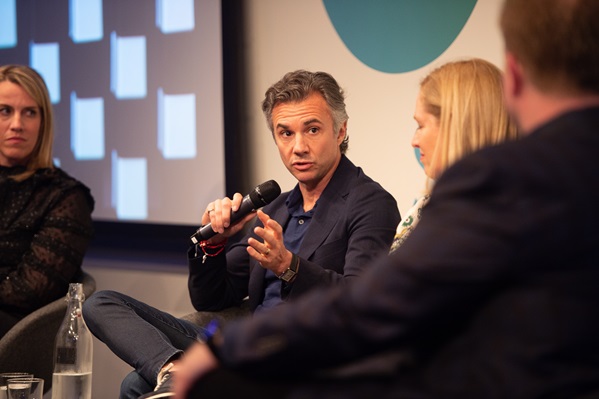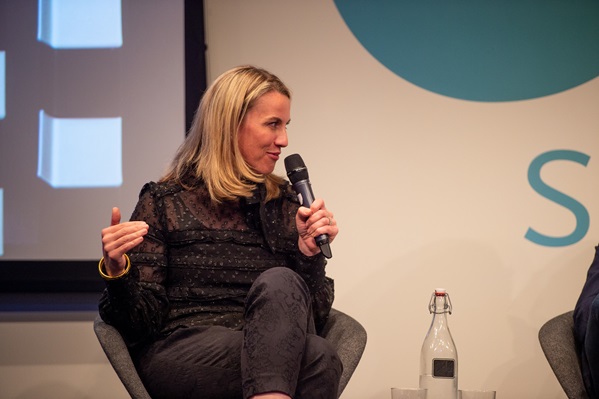October 10, 2019
CMOs and Teamwork: How Can High-Performing Teams Shape Success?
By
Marketing, Sales & Communications Officer Practice
Today’s CMOs are facing unprecedented disruption and transformation. As rapidly changing consumer dynamics have devalued access to capital and compressed the impact of strategy, execution has become the great differentiator. And it now falls to CMOs to build and sustain high-performing teams that can rapidly translate strategy into everyday processes and capabilities. So, how can they create and lead teams that will help their organizations consistently produce positive results? And what is the best way to get a group of individuals aligned on the same page and truly working effectively together?
We put those questions and more to three of the very best global marketing leaders — Barbara Messing, former SVP & CMO of Walmart; Kellyn Smith Kenny, CMO of Hilton; and Diego Scotti, EVP & CMO of Verizon — at Spencer Stuart’s 17th Annual CMO Summit. They shared invaluable insights and advice with the audience of senior marketers on ways to make their teams more efficient and collaborative.
The promise of teams remains unfulfilled
Spencer Stuart consultants kicked off the discussion by pointing out that most organizations operate with the core belief that developing and cultivating great teams is as critical as any hard business practice. Research backs this up, showing that top teams account for 40 percent of the value of any organization.
Effective teams share a strong sense of mission orientation, he said, and an openness that ensures diversity of ideas without judgment. Teams that work are agile and learning-oriented. They are 100 percent aligned with the customer or client. They focus on outcomes and accountability.
What makes the best teams great?
Diego Scotti cited his marketing team — and he counts agencies and creative partners as part of the team —as the best team he’s been a part of. He said the biggest compliment he got was when someone said he couldn’t discern the internal client from the agency partner in meetings. "I was like, wow! That is what I always wanted to create — the sense of we’re in this together.”

Diego Scotti, EVP & CMO of Verizon
Sometimes a great team fights its way to the top. Kellyn Smith Kenny described how she led a radical transformation, going from an old-school waterfall model to agile. “Within nine months, we had outperformed our forecast by two-and-a-half times,” she said. “We had some tasks take 90 percent less time because we really got good at prioritization. That was an amazing team!”
The trend toward leader as facilitator
A survey of marketing leaders showed close to half defined their primary role in team management as a facilitator. Messing agreed, explaining her role as being the person in the back and in the front. “As the leader, you're the person in the back and in the front, but always pushing forward. It's absolutely core to the role of the modern leader.”
“The magic happens in the seams,” Smith Kenny said. “I always say to the team, it's my job to make sure I'm facilitating the magic because you are the deep subject matter experts.” CMOs are at their best when they have really great stimulus from people and they can explore and discover together, she said.
The golden age of marketing teams
Whether leading organizational transformation or assuming responsibility for ensuring that all customer experiences are aligned to a common brand vision, CMOs are moving from functional roles to driving business and brand results. This means leading broader teams with wider-ranging skills, an opportunity relished by members of our CMO panel.
“I don't think there has been a more exciting time to be in marketing,” Smith Kenny said. “We say on our team that if you're standing still for a year, you're going to find yourselves 10 years behind. You need people who think with their head and their heart. You have to be guided by data, but the answer is not in the spreadsheet. You have to have instincts. You have to have intuition.”

Kellyn Smith Kenny, CMO of Hilton
That gut feeling combined with integrating data rewards you with amazing leaders, Scotti said. “In order for the interdependability to work across marketing, you need people who sometimes lead, sometimes follow and always collaborate.”
The very best leaders on Messing’s team stand out for embracing change. “They are the ones who are saying that, regardless of where I am today, I want to be on this journey. And I'm going to lean in and learn what I need to learn. I get so excited because they are the future CMOs.”
Maintaining alignment and functionality
It’s the job of CMOs to get their teams on the same page with clear goals and open, multi-faceted communication. We asked our panel about their best practices for keeping their teams aligned and humming. Scotti referred to what he calls his “cabinet meeting” — two full days every month when the leaders of his team meet with their agency partners. “Everything that needs to be discussed, gets discussed there,” he said. “If you come to that meeting from an agency, you represent your function, but most importantly, you are part of Verizon.”
To get to the heart of the issues, Smith Kenny said you need to put some of the niceties aside. “Getting the dialogue to be candid has been incredibly transformational for our team. You can have the perfect rhythm of the business, the perfect discussions and decisions. But if people aren't honest, and they harbor the feelings beneath the surface, trust gets eroded, and you make bad decisions.”
Effective communication and trust are also evolving under Messing. “It was a culture where everyone was nice in the room, and then everything would happen outside the room because people didn’t want to disagree publicly. And so you didn't really get to the meat of the matter. I'm trying to have those conversations in the room because it makes the team more productive and trusting.”
Communicating with dispersed teams
In a global, digital economy, one of the challenges for CMOs is actually a practical one. How do you manage a team that works remotely or in several different places across the country or around the world? Scotti, whose business is primarily in the U.S., expressed his preference for talking with his teams — not by email and not by text. “Call somebody and make a connection,” he said. “We talk a lot when we are in meetings and in discussions, and we talk very little when it's just an email or a text message. How am I able to communicate a full thought in 10 words or less and expect the other person to understand the context?”
Messing’s approach to efficient team meetings focuses on moderating sometimes lengthy presentations from team members during her regularly scheduled Friday meeting. “I always promise I’ll read the deck, but I’ll ask, ‘What are the two critical pages that will help us have a great conversation?’ The best thing is when I hear my team asking the same critical questions, and I know they’re driving to the same strategy.”
For Smith Kenny, who oversees marketers in dozens of countries, there is no substitute for face-to-face meetings. “You've got to get out and spend time with the team,” she said. “You just see the energy that they have and the connection that they feel when you're physically present with them.” She also uses live-stream capabilities to conduct town hall meetings. “It’s better than an email, better than a text message — just not as good as being in person. And the feedback has been hugely positive.”
Risk-taking and fast failure
While acknowledging the necessity to innovate, Scotti said the danger is in chasing the extremes. “Every year it’s like, ‘Well, it's all about data now.’ So then creativity doesn't matter anymore. Or, ‘No, we're all about brand building.’ I believe in balance,” he said. “The question is where do we put our bets? I need to think about that very carefully because the cost of opportunity and the time of my team is enormous.”
Smith Kenny advised senior marketers to learn valuable lessons from those who failed. “Tell people the stories about what happens when organizations get overly ROI focused. You don't want to take the budget that's meant to build love and emotional connection and plow it into one thing. We've been able to resist that urge that is so tempting for many other organizations.”
Conclusion
As the summit drew to a close, attendees were reminded that when it comes to leading highly effective teams, actions speak louder than words. “What you say matters, but what you do every day to help make your team the best it can be is what is most impactful.”